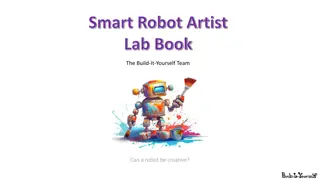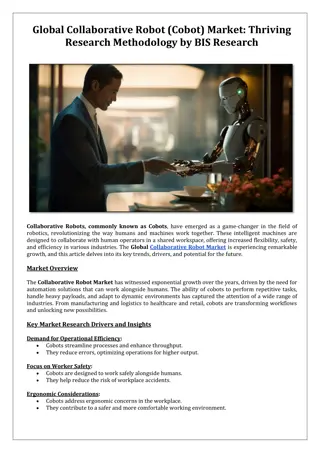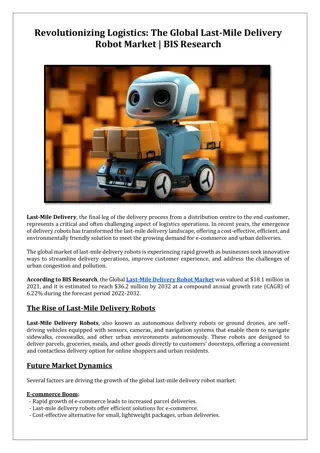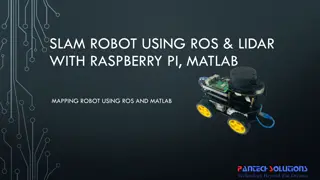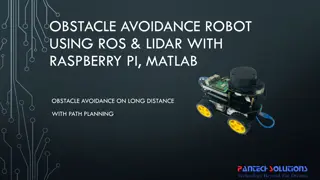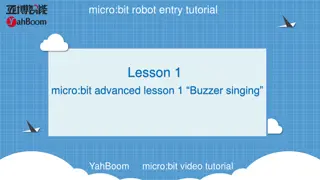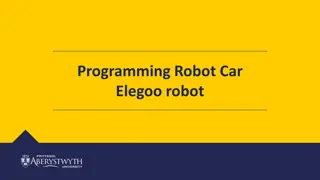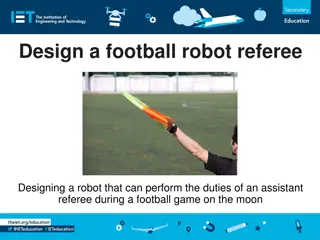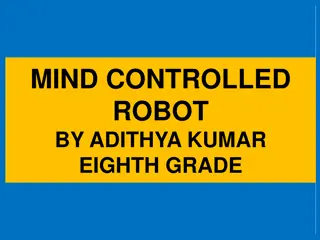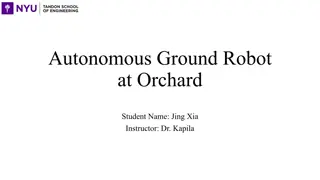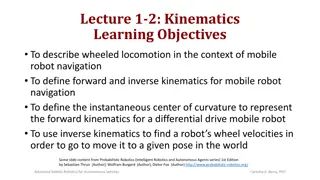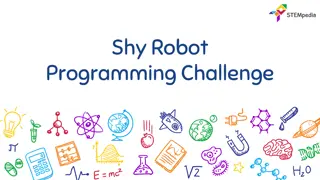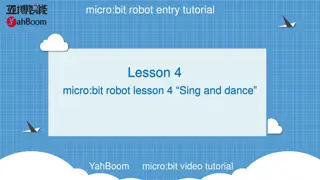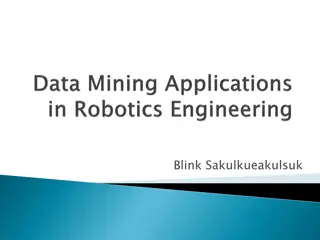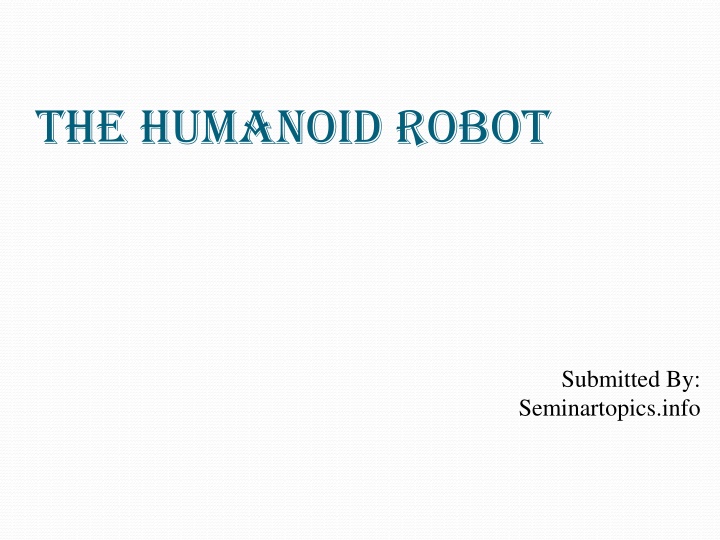
Exploring Humanoid Robots: History, Challenges, and Applications
Delve into the world of humanoid robots, from their definition to their development, including the reasons behind creating human-like robots, historical perspectives, challenges faced in their creation, and their wide-ranging applications in various fields. Discover the evolution of robotics and the fascinating journey towards creating intelligent mechanical beings that resemble humans both in appearance and behavior.
Download Presentation

Please find below an Image/Link to download the presentation.
The content on the website is provided AS IS for your information and personal use only. It may not be sold, licensed, or shared on other websites without obtaining consent from the author. If you encounter any issues during the download, it is possible that the publisher has removed the file from their server.
You are allowed to download the files provided on this website for personal or commercial use, subject to the condition that they are used lawfully. All files are the property of their respective owners.
The content on the website is provided AS IS for your information and personal use only. It may not be sold, licensed, or shared on other websites without obtaining consent from the author.
E N D
Presentation Transcript
The Humanoid Robot Submitted By: Seminartopics.info
Outline What is a Robot? What is Robotics? Robot Types What is a Humanoid? Why Develop Humanoids? History of Humanoid Robots Challenges in Humanoids Humanoid Robot Applications
Outline Contd ASIMO : An Intro The Latest Version of ASIMO The Intelligent System Why ASIMO is most intelligent Social Issues
What is Meant By a Robot: A robot is a mechanical or virtual intelligent agent that can perform tasks automatically or with guidance, typically by remote control. In practice a robot is usually an electro-mechanical machine that is guided by computer and electronic programming
What is Robotics? Robotics is the branch of technology that deals with the design, operation, structural disposition, manufacture and application of robots and computer systems for their control, sensory feedback, and information processing. construction,
Robot Types: Mobile Robot Industrial Robot Service Robot Humanoid Robot
What is a Humanoid? Humanoid refers to any being whose body structure resembles that of a human: head, torso, legs, arms, hands. But it is also a robot made to resemble a human both in appearance and behavior. The difference between a robot and android is only skin-deep, looks exactly like humans on the outside, but with internal mechanics of humanoid robot.
Why Develop Humanoids? They can work in human environment without a need to adapt themselves or to change the environment It is easier for a human being to interact with a human-like being
Historical Perspective: Alexander constructed statues, doors and small mechanical animals that could be animated by water, air and steam pressure By the eighteenth century, elaborate mechanical dolls were able to write short phrases, play musical instruments, and perform other simple, life-like acts.
Characteristics of Humanoids Self-maintenance Autonomous learning Avoiding harmful situations to people, property, and itself Safe interacting with human beings and the environment Legged locomotion Arm control and dexterous manipulation
Challenges in Humanoids Bipedal human-like locomotion Changing model during one/two feet support walking Two legs, two arms, head, torso Complex kinematics and dynamics Complex real-time control architecture
ASIMO robot of Honda Company It can walk and climb the stairs It is 120 cm high and 43 kg weight It looks like humans It can work like human beings It has the ability to take decisions It can use common sense in the new environment
Latest Version of ASIMO on March 23, 2003 Honda has unveiled a new version of its humanoid robot that understands human gestures and movements. Capable of to following the moves of nearby people It uses a camera to recognize ten different preprogrammed faces and respond with a vocal welcome
What are Intelligent Systems ? A System Is Thought To Be Intelligent If It Can Understand And Learn, Solve A Problem, Make Its Own Decisions And Adapt To New Environments
Why ASIMO is most intelligent? It can work as a person like cooking , cleaning, recognize nearby people, understands human gestures and movements etc. ASIMO can change both its speed and its directions smoothly without having to stop where as the conventional P3 robot had to stop once before changing its direction. It can make decision in the new environment It can understand the problem and works accordingly It is used for entertainment as well as other necessary useful works
Social Issues Related to Humanoids Plenty of humans already who do not have jobs or good places to live , then why replace with Humanoids Why not keep humanoids, like calculators, merely as useful gadgetry? Robots will become super intelligent and rule this world



